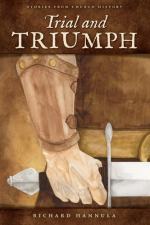
|
| Name: _________________________ | Period: ___________________ |
This test consists of 15 multiple choice questions and 5 short answer questions.
Multiple Choice Questions
1. How did Tyndale die?
(a) He died from illness.
(b) His wounds from his lashing became infected, and he died.
(c) He was hung.
(d) He was burned at the stake.
2. According to Luther, who mediated forgiveness between Christ and man?
(a) No-one.
(b) The priest.
(c) The Pope.
(d) A saint.
3. What did the first 200 years of the church face regularly?
(a) Accolades.
(b) Persecution.
(c) Ridicule.
(d) Questioning.
4. What happened in Europe in the 1500s?
(a) Spiritual reform.
(b) Spiritual revitalization.
(c) Spiritual collapse.
(d) Spiritual death.
5. Who was Polycarp's teacher?
(a) Jesus.
(b) The Apostle John.
(c) Simon.
(d) Constantine.
6. What surprising action did peaceful Bernard take?
(a) He ate meat.
(b) He joined the Crusades.
(c) He yelled at those who didn't believe what he did.
(d) He killed an objector.
7. What happened to Anne Askew?
(a) She was one of the first women to achieve an official position in the church.
(b) She was taunted by priests, tortured, and put to death.
(c) She was drowned as a witch.
(d) She had the honor of converting multitudes of people.
8. How did Boniface die?
(a) He died from old age.
(b) He died from illness.
(c) He was killed by a pagan mob.
(d) He was burned at the stake.
9. What happened to Cranmer after he recanted?
(a) He was promoted.
(b) He became the religious advisor to the queen.
(c) He was burned at the stake.
(d) He was hung.
10. How old was John Calvin when he wrote the Institutes of the Christian Religion?
(a) He was in his 40s.
(b) He was in his 30s.
(c) He was in his 20s.
(d) He was in his teens.
11. What was Charlemagne's job?
(a) Bishop.
(b) Preacher.
(c) Pope.
(d) He was king of the Franks.
12. What did Constantine the Great do to Christianity?
(a) He laughed at it.
(b) He banned it.
(c) He encouraged it for others, but not for his own self.
(d) He legalized it.
13. What happened to Tyndale when he was captured?
(a) He was lashed.
(b) He was banished from the church.
(c) He was put in a rat-infested hole.
(d) He was hung.
14. What did Anselm become under popular demand?
(a) Head Schoolmaster.
(b) Archbishop.
(c) Retired.
(d) Pope.
15. What was the supreme guide of the church according to John Wycliffe?
(a) Fasting.
(b) Scripture.
(c) Money.
(d) Prayer.
Short Answer Questions
1. For what was Elizabeth of Hungary known?
2. What did William Tyndale do that made him an outlaw?
3. Tyndale felt that many Catholic doctrines were undermined by what?
4. Who did Renee protect?
5. What happened to the French Protestants?
|
This section contains 451 words (approx. 2 pages at 300 words per page) |

|




